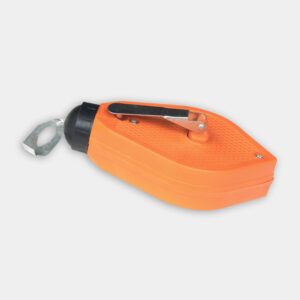We may be compensated if you purchase through links on our website. Our team is committed to delivering honest, objective, and independent reviews on home products and services.
Project details
Skill
Cost
Estimated Time
While installing shingle roofing can be challenging and dangerous, understanding the process can help you decide whether to tackle it yourself or hire a professional. How to install shingles on a shed roof is challenging, let alone on the roof of your home. This guide will walk you through the steps of installing roof shingles, from preparation to completion. In the video above, This Old House expert Tom Silva demonstrates the proper techniques for shingling a roof.
Roof Work Safety Considerations
Before beginning any roofing project, safety should be your top priority. Roofing work can be dangerous—especially on higher structures. Silva emphasizes that a third of construction fatalities occur from falls off roofs, underscoring the importance of proper safety measures. When working on a roof, always use the following:
- A sturdy ladder
- Non-slip shoes
- Safety harness
- Safety glasses
- Work gloves
We recommend hiring a professional roofing crew for larger or higher roofs. They have the experience and equipment required to work safely at heights.
Preparing the Roof for Shingles
Before you start laying down new material, inspect the roof deck. Look for any damaged, rotten, or soft wood that needs replacing. Check that the decking is securely fastened to the rafters to create a stable surface for the shingles. Figure out how many shingles you need.
Installing the Drip Edge
The drip edge helps direct water away from the fascia and into the gutters. To install the drip edge, follow these steps:
- Line up the aluminum drip edge flush with the edge of the roof.
- Mark the top of the drip edge on each end of the house with a pencil.
- Use a chalk line to snap a straight line between the marks.
- Pull the drip edge down about half an inch from the chalk line.
- Nail the drip edge in place using 1-and-1/4-inch galvanized roofing nails.
- Repeat steps for gabled ends, installing the drip edge up the roof along the gable.
Applying Roofing Felt
Roofing felt creates a barrier between the roof sheathing and the shingles. Start at the bottom of the roof and roll out the 30-pound asphalt roofing felt. Overlap each row by about 2 inches, and secure the felt with 1-and-1/4-inch galvanized roofing nails.
Installing Roof Shingles
Consider the type of shingle you want to install on your roof. The most common shingle type is the three-tab asphalt shingle, which is popular for its durability and ease of installation. If you’re looking for a more attractive option with enhanced durability, consider architectural shingles. These are thicker and heavier than three-tab shingles and are designed to provide a layered, dimensional look.
With roof preparation complete, you can begin installing the shingles.
Laying Out the Shingle Pattern
The layout helps you achieve straight rows and correct exposure. To lay out the pattern, follow these steps:
- Start at the bottom of the roof, measuring the roof 1/2 inch from the edge to ensure overhang.
- Mark 12 inches up for the first course of shingles.
- Continue marking every 5 inches up the roof for the reveal.
- Snap chalk lines horizontally at each 5-inch mark.
- Snap vertical chalk lines every 6 inches to guide shingle placement.
Creating a Starter Course
The starter course is the first row of shingles and ensures proper water drainage. Cut off the tabs of a full shingle, leaving only the top portion with the tar strip. Place this modified shingle at the bottom edge of the roof, overhanging the drip edge by about 1/4 inch. Nail the starter strip in place.
Installing the First Course
The first course sets the foundation for all subsequent rows. To install it, place a full shingle at the bottom left corner of the roof, aligning it with your chalk lines. Nail the shingle in place, using four nails per shingle. Continue across the roof, butting each shingle tightly against its neighbor.
Continuing With Subsequent Courses
To create a staggered pattern that enhances water resistance, take these steps:
- Cut 6 inches off the first shingle of the second course.
- Install this shortened shingle, aligning its bottom edge with the top of the cutouts in the first course.
- Continue across the roof with full shingles.
- For the third course, cut 12 inches off the first shingle and repeat the process.
- Return to a full shingle for the fourth course and continue the pattern.
Addressing Roof Valleys When Installing Roof Shingles
Roof valleys are prone to water infiltration. Here’s how to handle these areas to extend the lifespan of your roof.
Closed Valley Installation
In a closed valley, the shingles on one side of the valley extend across it while the shingles on the other side are trimmed to fit and tucked under the top of the laid shingles. This method requires precision to ensure water runs off without seeping under the shingles.
Open Valley Installation
A metal flashing is installed in an open valley to provide additional protection against water. The shingles are then cut and sealed along the edges of the flashing. This method is preferred in areas with high rainfall.
Finishing Touches on Roof Shingle Installation
To cap the ridge of the roof, cut individual shingle tabs from full shingles. Starting at one end of the ridge, nail these tabs in place, overlapping each by 5 inches. Continue until you reach the other end of the ridge.
Any exposed nail heads should be sealed to prevent water infiltration. Apply a small dab of roofing cement over each exposed nail head. Smooth the cement for complete coverage.
Before your roofing job is complete, conduct a final inspection. Check for the following:
- Clean gutters and downspouts to ensure water flows freely
- Proper alignment of shingles
- Sealed nail heads to avoid future leaks
- Secure nailing without missed spots





